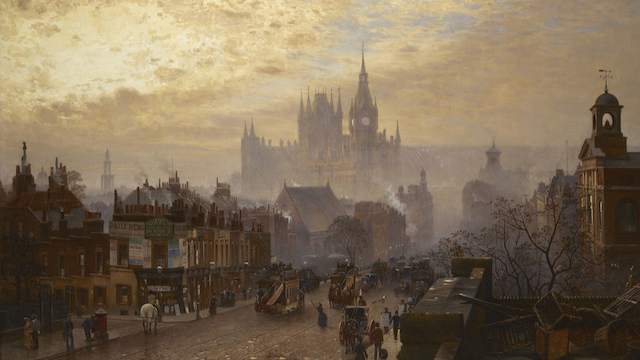
One hardly knows where, in the history of science, to look for an important movement that had its effective start in so pure and simple an accident as that which led to the building of the great Washington telescope, and went on to the discovery of the satellites of Mars. [Simon Newcomb, The Reminiscences of an Astronomer, 1903
Who was Simon Newcomb?

Is he not the celebrated author of The Dynamics of an Asteroid – a book which ascends to such rarefied heights of pure mathematics that it is said that there was no man in the scientific press capable of criticizing it? [VALL]
In A Curious Collection of Dates, Leah Guinn (JHWS “Amber”) and Jaime N Mahoney (JHWS “Tressa”) note:
Several men have the dubious honor of being considered models for James Moriarty, and eminent American astronomer Simon Newcomb is one of them.
Newcomb was a gifted mathematician who, like Moriarty, applied his genius to the field of astronomy. In 1861, his paper “On the Secular Variations and Mutual Relations of the Orbits of the Asteroids” was published in the Memoirs of the American Academy of Arts and Sciences. It is possible that Arthur Conan Doyle came across Newcomb’s work in his own wide-ranging studies.
Another side of Newcomb
Also like Moriarty, Newcomb appears to have had a darker side. He studied mathematics under Benjamin Peirce at Harvard, later becoming friends with him. Newcomb did not become friends with Peirce’s son, Charles, a fellow mathematician four years Newcomb’s junior. In Charles Sanders Peirce: A Life, biographer Joseph Brent credits Newcomb with no less than the “successful destruction of” Peirce’s career. Among other moves to sabotage Peirce, and perhaps motivated by his profound disapproval of Peirce’s recent divorce and marriage to his mistress, Newcomb played a major part in the denial of Peirce’s 1902 application for a Carnegie grant.
It is highly unlikely that Conan Doyle was aware of these facts: however, the story of a mathematical genius with a dark side doing battle with an unconventional genius dedicated to logic sounds familiar all the same. [from A Curious Collection of Dates]
Sources:
Information from the volume A Curious Collection of Dates by Leah Guinn (JHWS “Amber”) and Jaime N Mahoney (JHWS “Tressa”). Additional information from the Encyclopaedia Britannica and Charles Sanders Peirce: A Life by Joseph Brent.
Posted by The Dynamic Duo, Ron (JHWS “Chips”) and Beth (JHWS “Selena Buttons”)
